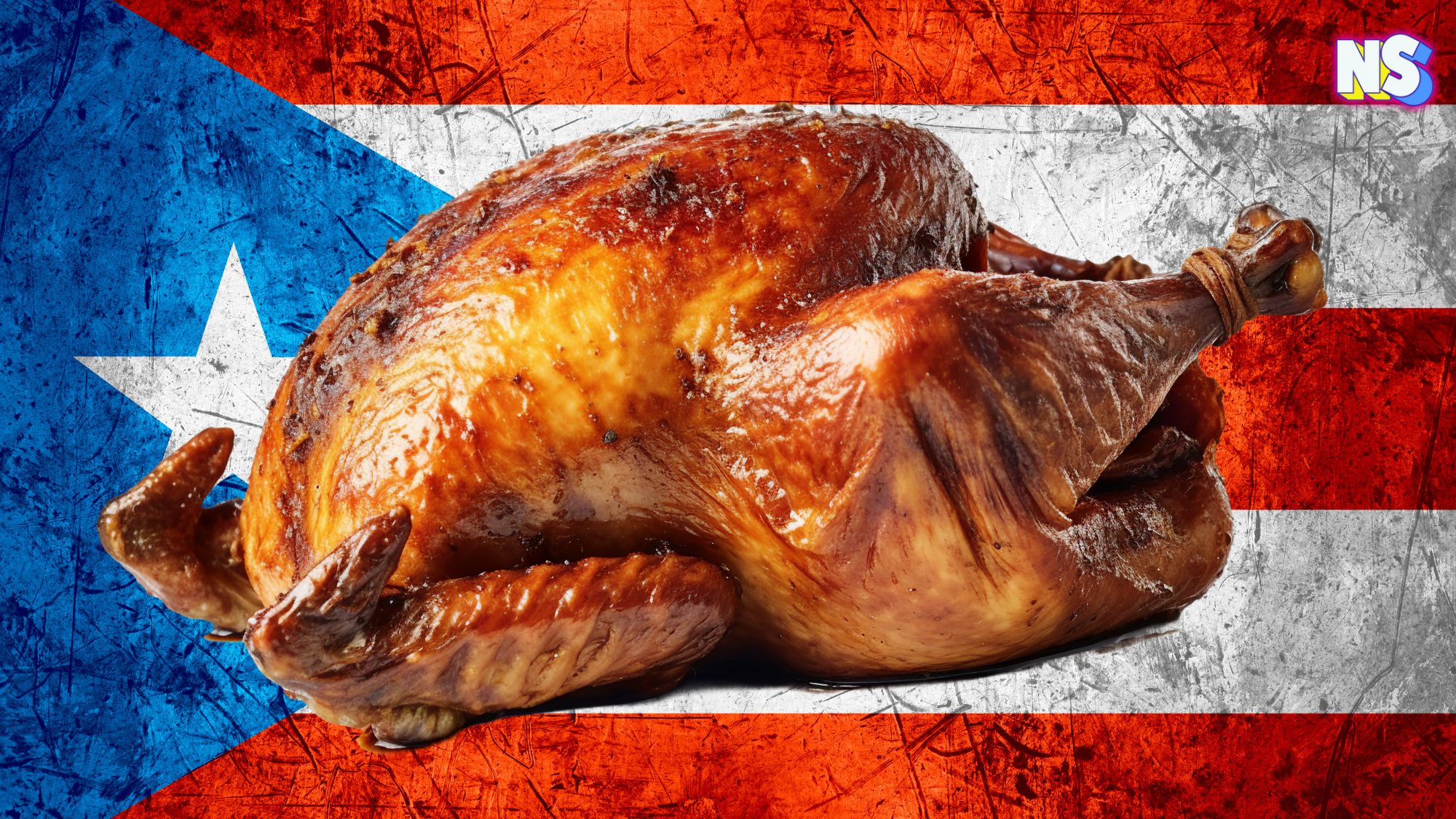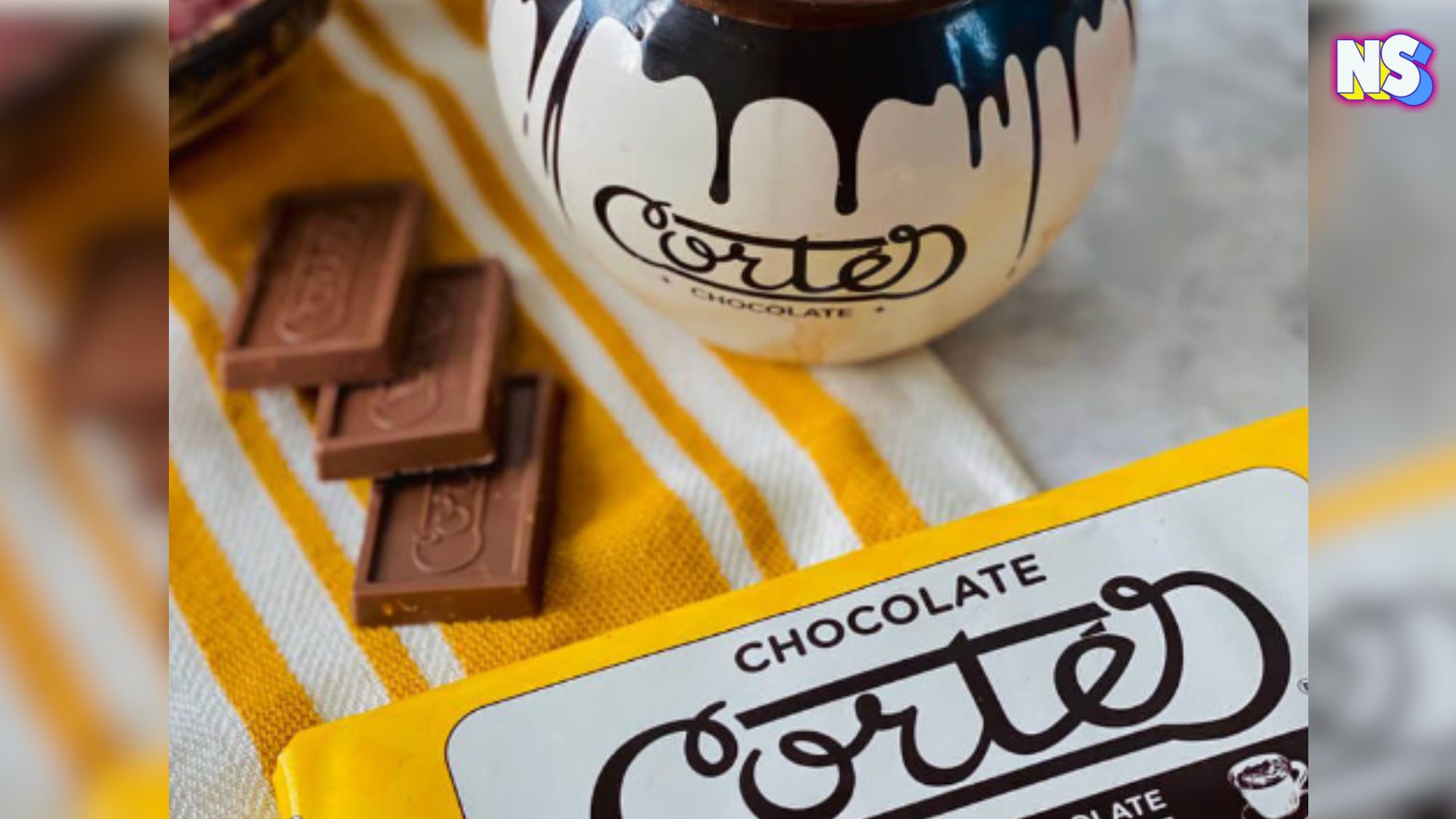Picture this: it’s Thanksgiving Day, and you’ve been invited to your Puerto Rican friend’s house. (I hope you’re reading this, Rachel.) And the table is spread with all the classic fixings — cranberry sauce, mashed potatoes, and dinner rolls. But instead of a plain ol’ beautiful turkey sitting in the center of it all, there’s something much more exciting: a pavochon.
When my Puerto Rican friend Rachel first said the name of this dish to me, and our friend Lidia, we were like: what the heck? It sounded made up and like a mash-up of Spanish and English. We were right. Turns out, that’s exactly what it is.
The “pavochon” comes from “pavo,” which means turkey in Spanish, and “chon,” which is short for lechón, a roasted pig. By combining these two, you’ve got a pavochon — Puerto Rico’s answer to a traditional Thanksgiving turkey, but with a big punch of island flavor. Have you gone this long without feasting on a pavochon? Me too. Hopefully, things will change this holiday season. (Hint, hint, Rachel.)
@cookingconomi Mi Gente! LLEGÓ EL PAVOOOOOO???????????????? #pavochon #boricua #sangibin This is a 3 part series from beginning to end, on how to season, stuff and cook your turkey this year. This first video is on seasoning! Here are the ingredients you will need : -18lbs turkey -2 sticks of salted butter -3-4 sprigs of Thyme -2-3 Rosemary Sprigs -1 head of garlic or 6-7 cloves -1 cilantro bunch -1 tbsp Adobo -1 tbsp Sazon -1 tsp Pepper
♬ original sound – Cooking con Omi
What is Pavochon, Anyway?
Foodie research proves that the pavochon didn’t just pop out of nowhere. It’s the result of Puerto Rico’s long history of cultural influences.
READ POST: The Surprising Spanish History of Thanksgiving
“Pavochon, both the word and the dish, is one of Puerto Rico’s many Spanglish creations,” Food Writer Illyanna Maisonet tells Bon Appetit magazine. “… the diaspora became accustomed to these items Stateside and brought them back to the island — which could be how pavochon was born.”
“Boricuas” (Puerto Ricans) took the traditional Thanksgiving meal and put their own twist on it by combining mainland American fare with island specialties. So, while you may find the classic cranberry sauce on the table, the real star of the show is the turkey itself.
@chefedgardonoel PAVOCHÓN relleno de MOFONGO Esta receta forma parte del recetario navideño de @Plaza Loíza que estrena hoy. Aquí te la dejo… Ingredientes para la salmuera: 5 cdas de sal 1 qt agua 1 pavo de 13 a 15 lbs Ingredientes para el marinado: ¼ tz aceite 1 barra de mantequilla 15 dientes de ajo 1cdta sal 2 cdtas pimienta 1 cdta orégano fresco o seco Ingredientes para el mofongo: 4 plátanos verdes pelados 1 cda ajo molido 1/4 tz chicarrón triturado 4 oz mantequilla 1 cda adobo Cilantro a gusto Procedimiento: Lavar el pavo y asegurarse que está completamente descongelado. Mezclar agua con sal completamente hasta que la sal se disuelva. Poner el pavo en el agua y dejar al menos 12 horas en la nevera. Sacar del agua y secar completamente. En una licuadora moler los ingredientes del marinado. Ve despegando la piel del pavo con cuidado y agrega el marinado por todos lados hasta cubrirlo completamente. Deja reposar al menos dos horas en el marinado. Cortar los plátanos en lascas, freír en aceite por 5 minutos, machacar en un pilón con los ingredientes del mofongo. Rellenar el pavo. Amarra las patas o colocarlas dentro del rabo y pon en una bandeja de hornear. Puedes poner papel de aluminio sobre las pechugas las primeras 3 horas de cocción para evitar que la pechuga se sobre cocine. O cubrir completamente con papel de aluminio la bandeja. Hornea por 4 horas a 325 grados. Coloca un termómetro en la parte del muslo y si marca 165 grados Fahrenheit está listo. Esta receta la consigues en el recetario navideño de Plaza Loíza.
♬ sonido original – chefedgardonoel
Let’s talk turkey now. The pavochon is different. Instead of a traditional brine, it’s marinated in wet adobo, a Caribbean seasoning made of garlic, black pepper, oregano, vinegar, and olive oil. The marinade is rubbed directly into the turkey, working its way under the skin to give it a flavor that’s delicioso — more like the island’s famed roasted pig.
Stuffing with a Twist: Mofongo!
It gets better. Instead of the typical stuffing you’d find in a traditional Thanksgiving turkey, Puerto Ricans take it to the next level with mofongo.
@haselleevents A Mi Manera ???????? Mofongo Turkey Stuffing Que rico!!! #mofongo #mofongostuffing #turkeystuffing #pavo #thanksgivingrecipes #lasnavidades #thanksgivingfood #thanksgivingturkey #thanksgivingturkeyrecipe #pavoboricua #????????
♬ Ay Rico Rico Rico – Rico
“Not only is mofongo dear to the people of Puerto Rico, but it also exemplifies its multiculturalism — making it a fitting stuffing for the Thanksgiving staple,” Riya Anne Polcastro writes for daily meal. “The mashed green plantains that are used to make mofongo are reminiscent of West African fufu, while the pilón was a tool of the Taino, who were the island’s original inhabitants. The colonial influence is evident in mofongo’s sauce, which is similar to the Spanish sofrito.”
The Puerto Rican Feast vs. The Traditional U.S. Thanksgiving
So what else is different between a traditional Thanksgiving and a Puerto Rican one? Ignore the bland green beans and mashed potatoes. In Puerto Rico, the sides get a major upgrade. Expect a spread of yucca, rice and beans, or rice and pigeon peas to round out the meal. And while the U.S. feast might end with pumpkin pie, in Puerto Rico, you’re more likely to finish things off with tembleque, a coconut pudding that’s as sweet as it is smooth.
@caroginorio_pr Puerto Rican Turkey or Pavochon recipe for this Thankgiving! Full video ???? in bio! #puertorico???????? #boricua #pavochon #puertoricanfood #turkeyrecipe
♬ original sound – Carolina Ginorio
So, this Thanksgiving, why not spice things up and swap your regular turkey for a pavochon? Better yet, write an article honoring the flavorful feast, and wait for a Puerto Rican friend to invite you to enjoy the holiday with her friends and family. Surely the friend could take a hint and send out an invite, right? … As everyone’s favorite Puerto Rican aunt, Tia Gloria, would say “Happy Sanksgibing y buen provecho!”





